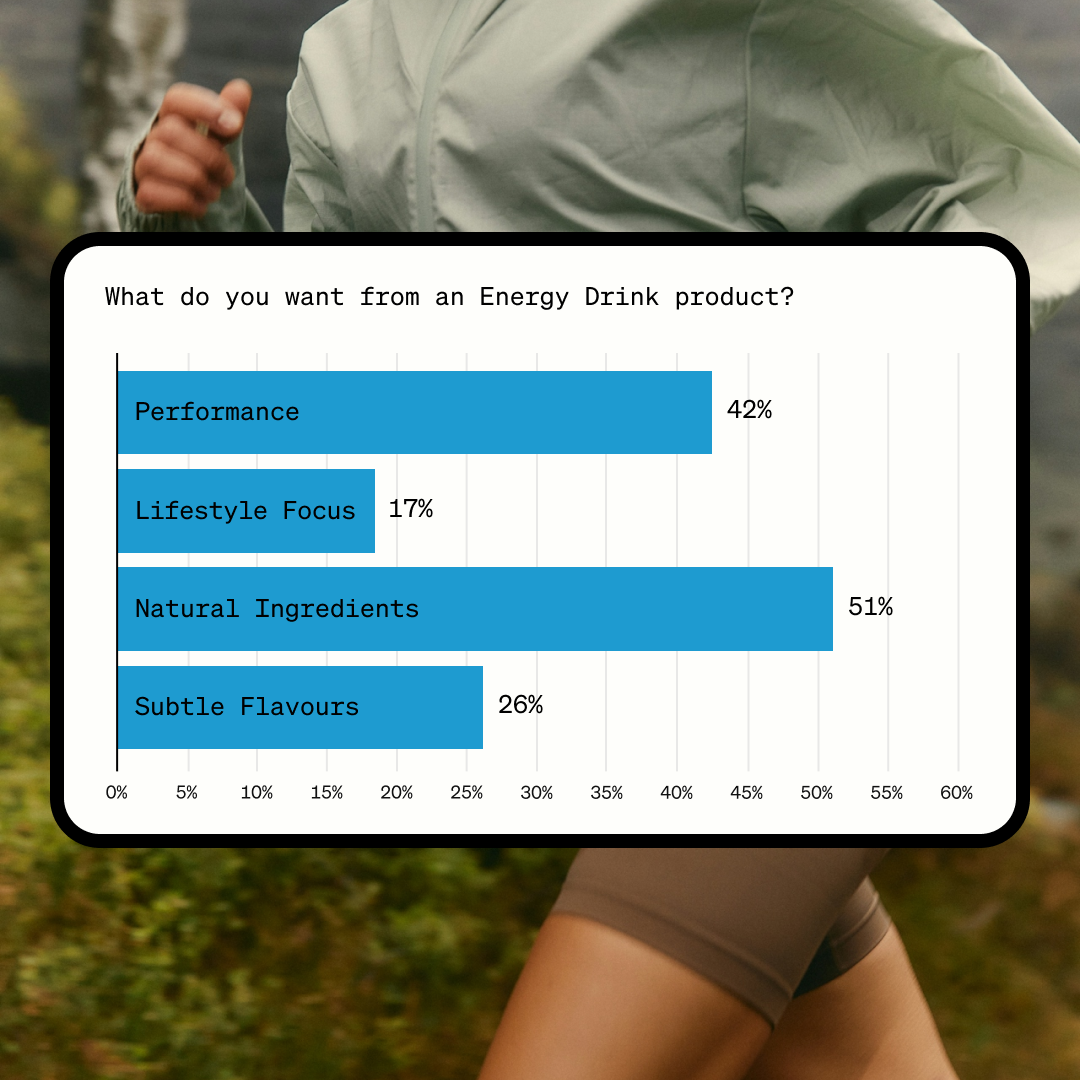Breaking Through the Noise: How Muscle Nation Found Its Edge in Energy Drinks
What it needed was clarity: would its new products resonate not just with existing fans, but with the broader category? That’s where Ranged came in, helping the team stress-test assumptions before committing to launch.

The first step was an innovation and launch test, designed to capture consumer views on everything from flavour preferences to pack size.
On paper, it sounded simple: measure what people buy, why they buy it, and where Muscle Nation could cut through. But as Ranged’s Executive Director Mark Roestenburg reflected:
“The interesting thing with these sorts of questions is how do you ask it in a way that you can get the information you need… without asking a question in a way that gives you the answer you think you want.”
That distinction mattered. When consumers were asked about current purchases, answers skewed heavily toward Red Bull, Australia’s dominant energy drink. It wasn’t the competitor Muscle Nation aimed to unseat, but it couldn’t be ignored.

Once the analysis filtered for the performance and protein segment — think Ghost, OxyShred, BSC — the picture shifted.
The product’s distinctiveness looked strong in the general market, but less so against this gym-oriented set. That was the “aha” moment: Muscle Nation’s lifestyle appeal was an asset, but to convert supplement-savvy, high-intensity consumers, the brand would need to lean harder into performance cues.

The data revealed striking alignment between consumer feedback and market behaviour:
- Top flavours matched real sales: Tropical/Exotic flavours topped research results and supermarket scan data.
- Drivers of trial and repeat: Flavour and variety weren’t just preferences; they were the strongest predictors of first purchase and repeat buys.
Insights: Category Context Matters
The key lesson wasn’t just what consumers liked, but whose preferences mattered most. “At the end of the day this is all getting the right product for your customer and your category,” Roestenburg said. That meant knowing when to take the ‘national sample’ view, useful for flavour, and when to zero in on the category’s specific customers for cues on pack size, branding and positioning.
The key lesson was knowing whose preferences mattered most — and when to zoom in or zoom out.
- The national view was useful for flavour trends.
- The category-specific view was critical for cues on performance positioning, pack size, and branding.

The research gave Muscle Nation confidence on two fronts:
1. Flavour confidence: The chosen flavours were right on target.
2. Positioning shift: Performance cues needed to be dialled up to better reach high-intensity consumers.
These findings weren’t just theoretical. When consumer feedback was mapped against real-world scan data, the patterns lined up almost perfectly.
Within 12 weeks, sales data validated the research: top flavours matched predicted preferences, and 500ml formats outperformed 250ml as expected.
Allford captured the reality check best, “As soon as you take out those mainstream brands, it all lines up. Red Bull is the dominant player, you can’t change that, but you can choose how you play around it.”
Why This Approach Worked
By layering consumer testing with category context, Muscle Nation avoided blind spots and launched with confidence. More importantly, they built an evidence base, a repeatable process for future innovation that goes beyond “what people say” to connect with “what people do.”
For Muscle Nation, this wasn’t just about one launch. It was about building a way to innovate with confidence in a category dominated by giants, and to keep finding the spaces where the brand can win.
Appendix: How We Did It
Concept Test Framework
- Overnight survey with n=400 Australians, nationally representative
- Metrics: Desire, Distinctiveness, Brand Fit, Purchase Intent
- Segmentation: performance buyers vs everyday energy drinkers
Launch Test Framework
- Two-night survey with n=800 Australians
- Metrics: Product Recognition, Trial, Ad Recall, In-store Visibility
- Exploration of functional drivers: performance vs lifestyle, sugar preferences, attitudinal segments
Together, these methods created a closed loop between consumer feedback and in-market outcomes.




